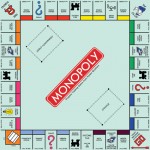Headlines of late have concerned themselves with competition, or the lack thereof, created by certain adopted business methods or maneuvers. With the inauguration of a new President came a proposed tougher stance on antitrust issues. Obama appointed Christine A. Varney to head the Justice Department’s antitrust division in a move that was meant to send a warning signal that the new administration was cracking down on companies vying for monopoly market positions.
Google is not new to the monopoly discussion. Varney has already publicly stated that Google is on its way to looking like Microsoft, and may be dealth with accordingly. A recent article for the NY Times discussed the growing market share that Google continues to claim, stating that “everyone loves google, until its too big.” And Google was recently sued for unfairly treating a competitor with respect to advertisement prices. Still, Google is not the only company taking up headlines in the context of monopoly discussions. The Pfizer/Wyeth deal brought questions in the bio-pharm market. Merger discussions between Live Nation and Ticketmaster has raised eyebrows from everyone in the entertainment and media industries, including Bruce Springsteen. Another New York Times article today discussed the practices of borrowing and stealing copyrights between two competitors in the children’s cable channel market, Disney and Nickelodeon.
This is not to say that current times are ripe for monopolies to take hold. In fact, the opposite has taken place, as the deal market has all but dried up completely. Still, these recent stories have re-raised the issue that, in intellectual property-heavy markets, monopoly is always a concern.
In patent law, the courts have frequently confronted the question of whether a government-granted monopoly is an exception to antitrust law. “In any given case, courts . . . had to find that one or the other concept took precedence,” and at first, “courts considered patents to be a government-endorsed exception to the antitrust laws.”[1] In 1902, one Supreme Court decision explicitly held that the practice of price-fixing by patent holders deserved immunity.[2] In the early days of antitrust law, patent law and antitrust law were at odds, and many believed that they worked in different directions.[3] After all, patent law granted monopolies, and antitrust law prevented them. Nevertheless, the recent prevailing idea is that they work together. In Atari Games Corp. v. Nintendo of America, Inc., the court proclaimed that “the aims and objectives of patent and antitrust laws may seem, at first glance, wholly at odds. However, the two bodies of law are actually complementary, as both are aimed at encouraging innovation, industry and competition.[4] The court in Atari Games, exemplifying the current movement of thinking in this arena, may have confused two very important factors. That is, there is a large difference between protecting the competitive process and protecting the competitor. Both bodies of law may fundamentally encourage innovation in some respect, and both may encourage, or preserve, industry to some capacity. Yet antitrust law protects competition, while intellectual property law protects one competitor. This concept is what keeps antitrust and intellectual property law at odds, and in the court, together.
Copyrights involve antitrust inclinations in a much more contained faculty than do patents. The right to exclusively use and sell the cure for cancer, conceivably the result of a single patent, could obviously confer monopoly power that would harm consumers and production of the product. On the other hand, the right to exclusively use and sell a book or a song, by itself, would not normally impact an entire market for literature or music. However, in the aggregate, such exclusive rights could bring copyright ownership to the same level of projected impact as that of an important and useful process or pharmaceutical. This aggregation has been slowly taking place through horizontal and vertical integration in the media and information industries. The cross-market merging of giant conglomerates has shrunk the diversity among those doing business in the entertainment and media industries.[5] Reflect on the following passage:
[I]n 1983, fifty corporations dominated most of every mass medium and the biggest media merger in history was a $340 million deal. . . . [I]n 1987, the fifty companies had shrunk to twenty-nine. . . . [I]n 1990, the twenty-nine had shrunk to twenty-three . . . . [I]n 1997, the biggest firms numbered ten and involved the $19 billion Disney-ABC deal, at the time the biggest media merger ever. . . . [In 2000,] AOL Time Warner’s $350 billion merged corporation [was] more than 1,000 times larger [than the biggest deal of 1983].[6]
Currently, 71.7% of the recording industry’s global market share is allocated to just four companies.[7] However, horizontal integration, the significant control of a specific media sector, is not the largest problem for the free dissemination of information. Instead, vertical integration of the media market, with the same companies gaining ownership of content and the means to distribute it, causes this problem.[8] In other words, the media moguls are gaining ownership of copyrights and patents, and they are using them both to monopolize the content provided and the means for distributing the content.
At a time when information and its access is at a premium, headlines such as the ones we have seen recently will become more frequent. The inherent characteristics of ntellectual property creates these circumstances, and therefore managers of IP will be under the antitrust radar in the coming months and years.
[1] Sheila F. Anthony, Antitrust and Intellectual Property Law: From Adversaries to Partners, 28 AIPLA Q.J. 1 at 4-5 (Winter 2000).
[2] Bement v. Nat’l Harrow Co., 186 U.S. 70, 92, 95 (1902) (holding that the practice of patent pooling was exempted from the reach of antitrust, despite blatant price fixing).
[3] Anthony, supra note 104, at 4.
[4] 897 F.2d 1572, 1576, (Fed. Cir. 1990) (citing Loctite Corp. v. Ultraseal Ltd., 781 F.2d 861, 876-77 (Fed. Cir. 1985)).
[5] Ben H. Bagdikian, The Media Monopoly xx-xxi (6th ed. 2000).
[6] Id. (emphasis added).
[7] Press Release, IFPI, The Recording Industry in Numbers 2005 (Aug. 2, 2005), available at http://www.ifpi.org/content/section_news/20050802.html.
[8] Robert W. McChesney, The New Global Media, The Nation, Nov. 29, 1999, at 11, available at http://www.thenation.com/doc/19991129/mcchesney.

 Ian McClure is a former corporate & securities and intellectual property law attorney with
Ian McClure is a former corporate & securities and intellectual property law attorney with  Trevor M. Blum is a former Associate in the Chicago-based, valuation practice group of Ocean Tomo, LLC., an intellectual property (IP) consultancy. Additionally, he provided instrumental research support to Intellectual Property Exchange International, Inc., an IP exchange start-up. Trevor holds a B.S. from Indiana University and is currently an MBA candidate at the University of Cambridge, focusing on international business and finance. His interests also include entrepreneurship, economics, and informational visualization. He enjoys running and cycling in his free time. Trevor seeks to bring a transnational business perspective to the blog.
Trevor M. Blum is a former Associate in the Chicago-based, valuation practice group of Ocean Tomo, LLC., an intellectual property (IP) consultancy. Additionally, he provided instrumental research support to Intellectual Property Exchange International, Inc., an IP exchange start-up. Trevor holds a B.S. from Indiana University and is currently an MBA candidate at the University of Cambridge, focusing on international business and finance. His interests also include entrepreneurship, economics, and informational visualization. He enjoys running and cycling in his free time. Trevor seeks to bring a transnational business perspective to the blog. 
No Comments, Comment or Ping
Reply to “On Monopoly and Intellectual Property”